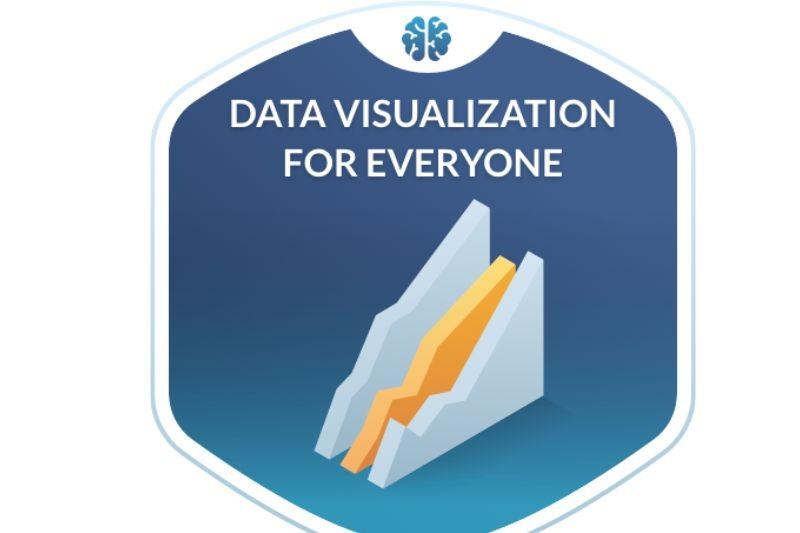In today’s data-driven era, effectively communicating insights and telling compelling stories through visual representations is paramount. Data visualization is crucial in understanding complex information, identifying patterns, and making informed decisions. Enrolling in a data visualization course can enhance your skills in creating impactful visualizations that drive understanding and engagement. This introduction will explore the benefits of data visualization courses, the key concepts covered, and the practical knowledge you can expect to gain. By the end, you’ll clearly understand how a data visualization course can effectively empower you to convey information through visually appealing and informative graphics. Read the following article curated by Neon Police to learn more about the data visualization course. Also, get an insight into data visualization courses for free and know about the best data visualization courses.
Benefits of Data Visualization Courses
Enrolling in a data visualization course offers numerous benefits for individuals involved in data analysis, decision-making, and communication:
1. Enhanced communication
Data visualization courses equip you with the skills to create visualizations that effectively communicate complex concepts and insights. By translating data into visual form, you can engage and captivate your audience, making it easier for them to understand and act upon the information presented.
2. Improved data analysis
Data visualization enhances your data analysis capabilities by providing visual representations that facilitate pattern recognition, outlier identification, and trend analysis. Visualizations enable you to explore data from different perspectives and gain deeper insights into your datasets.
3. Storytelling with data
A data visualization course helps you develop the ability to tell compelling stories with your data. You’ll learn how to structure visual narratives, highlight key findings, and guide viewers through a story that evokes meaningful insights and actions.
4. Decision-making support
Visualizations provide decision-makers with a clear and concise understanding of complex information. By presenting data in a visually appealing manner, you can support decision-making processes, facilitate data-driven discussions, and drive informed actions.
Key concepts covered in Data Visualization Courses
A comprehensive data visualization course typically covers the following essential topics:
a) Visualization Principles: You’ll learn the fundamental principles of data visualization, including best practices for designing effective visuals, choosing appropriate chart types, and applying color theory to enhance the readability and aesthetics of your visualizations.
b) Data Exploration and Preprocessing: The course will cover techniques for exploring and preparing data for visualization. You’ll learn how to handle missing data, clean and transform datasets, and identify variables relevant to your visualizations.
c) Charting and Graphing Techniques: The course will introduce you to a variety of chart types, graphs, and diagrams used in data visualization. You’ll explore techniques for creating bar charts, line plots, scatter plots, histograms, heatmaps, network diagrams, and more.
d) Interactive Visualizations: Interactive visualizations allow users to explore data dynamically, enabling deeper insights and interactive experiences. The course may cover tools and techniques for creating interactive visualizations that allow users to interact with and explore data on their own.
e) Dashboard Creation: Dashboards are powerful tools for displaying multiple visualizations and key metrics in a unified and interactive interface. The course may include instruction on designing and building dashboards to effectively communicate insights and provide interactive data exploration.
f) Data Storytelling: Effective data storytelling involves structuring narratives and designing visualizations that guide viewers through a coherent and engaging story. The course may teach you how to develop compelling data stories by combining visuals, annotations, and narratives.
Choosing the right Data Visualization Course
When selecting a data visualization course, consider the following factors:
- Course Content: Ensure that the course covers various visualization techniques, principles, and tools. Look for a course that provides a comprehensive curriculum, addressing both theoretical concepts and practical applications.
- Hands-on Experience: Practical exercises and projects are essential for mastering data visualization. Seek a course that offers ample opportunities to apply your skills through real-world scenarios, case studies, and interactive assignments. This hands-on experience will help solidify your understanding and proficiency in creating visualizations.
- Tools and Technologies: Data visualization can be accomplished using various tools and technologies. Consider whether the course focuses on a visualization tool like Tableau, Power BI, or Python libraries like Matplotlib and Seaborn. Choose a course that aligns with your preferred tools or offers a broad understanding of visualization across multiple platforms.
- Instructor Expertise: The expertise and experience of the course instructor are crucial. Research the instructor’s background, industry experience, and proficiency in data visualization to ensure you receive quality instruction and guidance throughout the course.
- Learning Resources and Support: Check if the course provides additional learning resources such as video tutorials, lecture notes, sample datasets, and a supportive online community or forum. These resources can aid your learning journey and provide avenues for clarifying doubts and seeking assistance.
- Flexibility and Accessibility: Consider the course format and delivery options. Some courses may be self-paced, allowing you to learn at your convenience, while others may have fixed schedules and live sessions. Choose a format that fits your schedule and learning preferences.
Conclusion
A data visualization course equips you with the skills to transform complex data into compelling visual representations. You can enhance decision-making, drive understanding, and engage your audience by effectively communicating insights and narratives through visuals. Through a comprehensive data visualization course, you’ll learn essential concepts, techniques, and tools to create impactful visualizations that unlock the hidden stories within your data. Consider the course content, hands-on experience, instructor expertise, learning resources, and accessibility when choosing a data visualization course. By investing in your data visualization skills, you’ll gain a competitive edge in data-driven industries, enabling you to present information effectively and make informed decisions based on actionable insights. Get ready to embark on a journey of visual discovery, where you’ll transform data into captivating visuals that convey powerful stories and drive meaningful outcomes. For more information, visit Datacamp and the official website of Neon Police.





